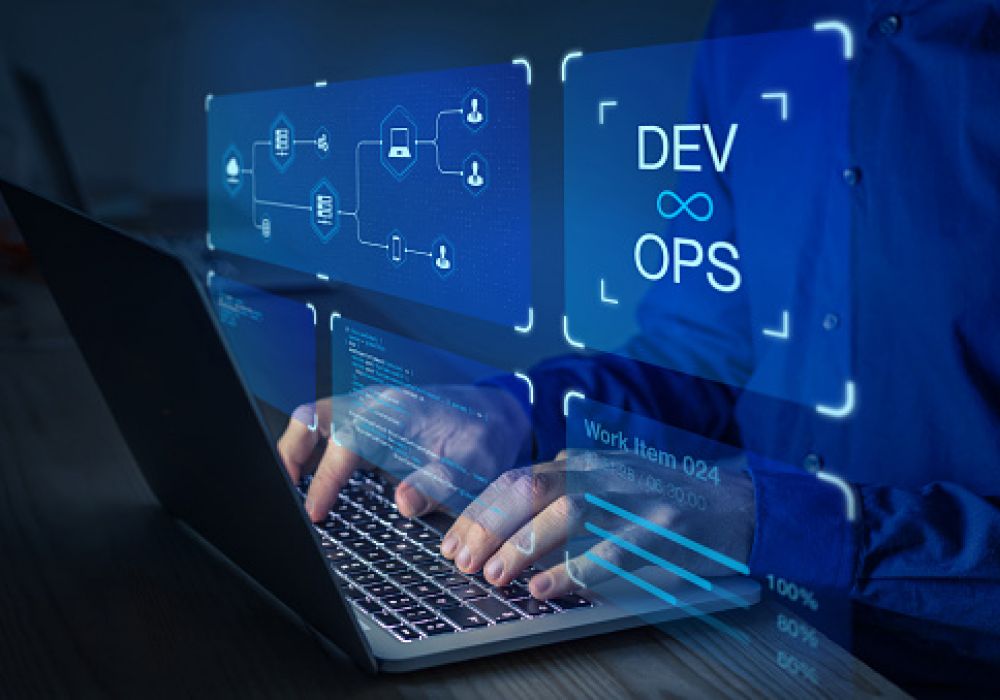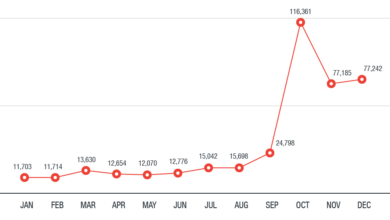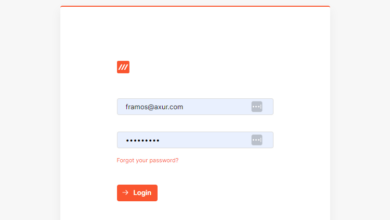
Heres What Secure DevOps Looks Like in Action
Heres what secure devops looks like in action – Here’s what Secure DevOps looks like in action: Forget the image of security as a roadblock; imagine it as a turbocharger for your development process. This isn’t about slowing things down; it’s about building better, more secure software, faster. We’ll dive into how to integrate security seamlessly into every stage of your DevOps pipeline, from initial design to continuous monitoring, and explore the tools and strategies that make it all possible.
Get ready to see how a security-first approach can actually boost your team’s efficiency and reduce risk significantly.
We’ll cover everything from defining the core principles of Secure DevOps and its key differences from traditional security models to examining practical examples of successful implementations. We’ll delve into the crucial role of automation, explore essential security tools, and tackle common vulnerabilities with practical mitigation strategies. The journey will also include discussions on fostering a security-conscious culture, measuring the effectiveness of your Secure DevOps practices, and analyzing real-world case studies to illustrate the tangible benefits.
Defining Secure DevOps in Practice
Secure DevOps isn’t just about adding security as an afterthought; it’s about weaving security into the very fabric of the software development lifecycle. It represents a fundamental shift from traditional security practices, prioritizing automation, collaboration, and a shared responsibility for security across development and operations teams. This integrated approach aims to deliver secure software faster and more efficiently.Secure DevOps operates on several core principles.
Firstly, it emphasizes automation throughout the entire pipeline, from code commit to deployment. This automation extends to security testing and vulnerability management, ensuring that security checks are performed continuously and automatically. Secondly, it promotes a culture of shared responsibility, where security is not solely the domain of a dedicated security team, but rather a collective effort involving developers, operations, and security professionals.
Thirdly, it leverages feedback loops to continuously improve security practices, identifying and addressing vulnerabilities quickly and efficiently. Finally, it embraces a shift-left approach, integrating security testing early in the development process, preventing vulnerabilities from ever reaching production.
Differences Between Secure DevOps and Traditional Security Approaches
Traditional security often operates in a siloed manner, with security teams acting as gatekeepers, reviewing code and infrastructure at the end of the development cycle. This approach can lead to delays, increased costs, and a potential for security vulnerabilities to slip through the cracks. Secure DevOps, in contrast, integrates security throughout the entire lifecycle, enabling faster feedback loops and more efficient remediation of vulnerabilities.
This proactive approach significantly reduces the risk of security breaches and improves overall software quality. Instead of a sequential handover, Secure DevOps fosters continuous collaboration and shared ownership of security responsibilities.
Examples of Successful Secure DevOps Implementations
Many organizations have successfully implemented Secure DevOps practices, reaping significant benefits. For example, Netflix leverages extensive automation and continuous integration/continuous delivery (CI/CD) pipelines to ensure the security of its vast streaming infrastructure. Their approach includes automated security testing at every stage of the development process, allowing for rapid identification and remediation of vulnerabilities. Similarly, companies like Google and Amazon have integrated security deeply into their DevOps practices, utilizing tools and techniques that enable them to deploy secure software at scale.
These organizations demonstrate that Secure DevOps is not just a theoretical concept, but a practical and effective approach to building and deploying secure software.
Benefits of Adopting Secure DevOps
The benefits of adopting a Secure DevOps methodology are numerous. Faster time to market is a key advantage, as security testing is integrated into the development process rather than acting as a separate, potentially lengthy phase. Reduced costs are also significant, as early detection and remediation of vulnerabilities prevent expensive fixes later in the lifecycle. Improved software quality is another key benefit, as a focus on continuous security testing and improvement leads to more robust and secure applications.
Finally, increased security posture is the ultimate goal, minimizing the risk of security breaches and protecting sensitive data. These benefits contribute to a more efficient and secure software development process, ultimately leading to a stronger competitive advantage.
Integrating Security Throughout the DevOps Lifecycle
Secure DevOps isn’t just about adding security as an afterthought; it’s about weaving it into the fabric of the entire development and deployment process. This requires a fundamental shift in mindset, moving from a reactive, “fix-it-later” approach to a proactive, integrated security strategy. By embedding security practices at each stage, organizations can significantly reduce vulnerabilities and improve overall system resilience.
A truly secure DevOps pipeline necessitates a holistic approach, encompassing security considerations from initial design through deployment and beyond. This involves integrating automated security testing, robust access controls, and continuous monitoring to identify and mitigate risks in real-time. The goal is to build security into the very DNA of the software, ensuring that security is not a separate concern but an integral part of the development workflow.
Designing a Secure DevOps Pipeline, Heres what secure devops looks like in action
A secure DevOps pipeline should incorporate security checks at every stage. Imagine a pipeline visualized as a series of interconnected stages: Code Development, Build, Test, Deploy, and Monitor. At the Code Development phase, static application security testing (SAST) tools can analyze code for vulnerabilities before it even enters the build process. The Build stage might include software composition analysis (SCA) to identify and address vulnerabilities in open-source components.
During the Test phase, dynamic application security testing (DAST) can assess the running application for vulnerabilities. The Deploy phase requires secure infrastructure configurations and access controls. Finally, the Monitor phase involves continuous security monitoring and incident response capabilities. Each stage provides opportunities for automated security checks, minimizing the risk of deploying vulnerable applications.
Integrating Security Testing into CI/CD
Effective integration of security testing within the CI/CD pipeline requires automation. This involves incorporating SAST and DAST tools into the build and test phases, automatically triggering security scans upon code commits or deployments. For example, when a developer pushes code to a repository, the CI system can automatically run SAST to identify potential vulnerabilities. If vulnerabilities are detected, the build process can be halted, alerting the development team to address the issues before they progress further.
Similarly, DAST tools can be integrated to automatically scan deployed applications, providing continuous security monitoring and early detection of vulnerabilities in production. This proactive approach significantly reduces the risk of deploying insecure software.
The Role of Automation in Enhancing Security
Automation is the cornerstone of a successful secure DevOps pipeline. Automating security tasks reduces human error, speeds up the feedback loop, and ensures consistent application of security policies. This includes automating security scans, vulnerability remediation, and security configuration management. For instance, infrastructure-as-code (IaC) tools can automate the provisioning of secure infrastructure, ensuring consistent security configurations across all environments.
Automated penetration testing can regularly assess the security posture of applications, identifying and mitigating vulnerabilities before they can be exploited. This continuous automation reduces the burden on security teams, allowing them to focus on higher-level strategic initiatives.
Comparing and Contrasting Security Testing Methods
SAST and DAST represent two primary approaches to security testing. SAST analyzes source code for vulnerabilities without actually running the application, identifying potential problems early in the development lifecycle. DAST, on the other hand, tests the running application, identifying vulnerabilities that may emerge from interactions between different components or from runtime configurations. While SAST is excellent for catching vulnerabilities early, it may miss vulnerabilities that only appear during runtime.
DAST excels at finding runtime vulnerabilities, but it can be more time-consuming and may require more complex setup. Ideally, a robust security testing strategy would incorporate both SAST and DAST, leveraging their respective strengths to achieve comprehensive security coverage. Other methods, such as Interactive Application Security Testing (IAST) and Software Composition Analysis (SCA), further enhance this approach by providing dynamic insights during application runtime and analyzing open-source components for known vulnerabilities, respectively.
Key Technologies and Tools in Secure DevOps
Secure DevOps relies heavily on a robust ecosystem of tools and technologies to integrate security seamlessly into the development pipeline. Choosing the right tools is crucial for automating security checks, minimizing vulnerabilities, and accelerating the release cycle without compromising security. This section will explore some key players in this space, focusing on their function, integration points, and the benefits they offer.
Essential Security Tools in Secure DevOps
The effective implementation of Secure DevOps demands a carefully selected suite of tools. These tools work in concert to automate security processes, providing continuous monitoring and feedback throughout the development lifecycle. The following table Artikels some essential tools and their functionalities.
| Tool Name | Function | Integration Points | Benefits |
|---|---|---|---|
| SonarQube | Static code analysis to detect vulnerabilities and code smells. | CI/CD pipelines, IDEs | Early detection of security flaws, improved code quality, reduced technical debt. |
| Snyk | Vulnerability scanning for open-source components and container images. | CI/CD pipelines, container registries | Automated detection of vulnerabilities in dependencies, reduced risk from open-source components. |
| OWASP ZAP | Dynamic application security testing (DAST) to identify vulnerabilities in running applications. | CI/CD pipelines, testing environments | Comprehensive vulnerability assessment, identification of runtime security flaws. |
| Vault (HashiCorp) | Secrets management for securely storing and managing sensitive information. | CI/CD pipelines, applications, infrastructure | Improved security posture, reduced risk of credential leaks, simplified secrets management. |
Infrastructure as Code (IaC) and Security
Infrastructure as Code (IaC) is pivotal for securing DevOps infrastructure. By defining and managing infrastructure through code, organizations can achieve consistency, repeatability, and auditability. This eliminates configuration drift and ensures that infrastructure adheres to security best practices. Tools like Terraform and Ansible allow developers to define infrastructure configurations, which can then be automatically provisioned and managed. IaC enables the implementation of security policies, such as access control, network segmentation, and encryption, in a repeatable and auditable manner.
This approach drastically reduces human error, a common source of security vulnerabilities in traditional infrastructure management.
Container Security in Secure DevOps
Containerization, while offering significant advantages in terms of agility and scalability, introduces unique security challenges. Securing containers requires a multi-layered approach, starting with secure image building. This involves using minimal base images, regularly updating dependencies, and scanning images for vulnerabilities using tools like Snyk or Trivy. Runtime security is equally crucial, necessitating the use of container security platforms that provide features like runtime monitoring, intrusion detection, and access control.
Implementing a robust container security strategy is vital for mitigating risks associated with containerized applications.
Secrets Management in Secure DevOps
Secrets management is paramount in a Secure DevOps environment. Sensitive information, such as API keys, database credentials, and certificates, must be handled with extreme care to prevent breaches. Dedicated secrets management tools, such as HashiCorp Vault or AWS Secrets Manager, provide a centralized and secure repository for storing and managing these secrets. These tools integrate with CI/CD pipelines, allowing developers to securely access secrets without hardcoding them into their applications.
This approach significantly reduces the risk of exposure and simplifies the management of sensitive data throughout the DevOps lifecycle. The use of strong encryption and access control mechanisms within these tools is essential for maintaining a robust security posture.
Addressing Security Risks and Vulnerabilities

Secure DevOps isn’t just about speed; it’s about speedand* security. Ignoring security risks in a DevOps environment can lead to significant breaches, financial losses, and reputational damage. Proactive identification and mitigation of vulnerabilities are crucial for a truly secure DevOps pipeline. This section Artikels common vulnerabilities, mitigation strategies, and incident response procedures.
Understanding and addressing security vulnerabilities is paramount in a DevOps environment. The fast-paced nature of DevOps, with its frequent deployments, increases the potential attack surface. A robust security strategy must be integrated throughout the entire lifecycle, from development to deployment and beyond.
Common Security Vulnerabilities and Mitigation Strategies
Several common vulnerabilities plague DevOps environments. Addressing these proactively is vital to maintaining a secure system. The following list Artikels some of the most prevalent threats and their corresponding mitigation strategies.
- Vulnerability: Insecure configuration of cloud services (e.g., improperly configured S3 buckets, open ports). Mitigation: Implement Infrastructure as Code (IaC) to manage configurations consistently and automatically. Utilize security scanning tools to identify misconfigurations and enforce security best practices through automated checks within the CI/CD pipeline. Regularly review and update security baselines.
- Vulnerability: Weak or default passwords. Mitigation: Enforce strong password policies, including minimum length, complexity requirements, and regular password changes. Implement multi-factor authentication (MFA) wherever possible. Use password management tools to securely store and manage credentials.
- Vulnerability: Unpatched software and dependencies. Mitigation: Regularly update all software and dependencies to their latest versions. Utilize automated patching tools and integrate them into the CI/CD pipeline. Implement a vulnerability management system to track and address known vulnerabilities.
- Vulnerability: Lack of proper access control and authorization. Mitigation: Implement role-based access control (RBAC) to restrict access to resources based on user roles and responsibilities. Regularly review and audit user permissions. Utilize least privilege principles, granting only necessary access.
- Vulnerability: Injection flaws (SQL injection, cross-site scripting (XSS), command injection). Mitigation: Implement input validation and sanitization to prevent malicious code from being executed. Use parameterized queries to prevent SQL injection. Encode user inputs to prevent XSS attacks. Employ secure coding practices and regular code reviews.
- Vulnerability: Secrets management issues (hardcoded credentials, insecure storage of API keys). Mitigation: Utilize dedicated secrets management tools (e.g., HashiCorp Vault, AWS Secrets Manager) to securely store and manage sensitive information. Avoid hardcoding credentials directly into code. Implement strong encryption and access control for secrets.
Implementing Vulnerability Scanning and Penetration Testing
Integrating vulnerability scanning and penetration testing into the CI/CD pipeline is crucial for early detection and remediation of security flaws. This proactive approach significantly reduces the risk of deploying vulnerable applications.
Static Application Security Testing (SAST) tools can analyze code for vulnerabilities before runtime. Dynamic Application Security Testing (DAST) tools assess running applications for vulnerabilities. These tools should be integrated into the CI/CD pipeline to automatically scan code and applications at various stages. Penetration testing, performed by security experts, simulates real-world attacks to identify vulnerabilities that automated tools might miss.
Regular penetration testing should be a part of a comprehensive security strategy.
Responding Effectively to Security Incidents
Despite proactive measures, security incidents can still occur. Having a well-defined incident response plan is crucial for minimizing the impact of such events. This plan should include procedures for detection, containment, eradication, recovery, and post-incident analysis.
A key aspect of effective incident response is having a dedicated security team or individuals responsible for handling incidents. This team should be trained to follow established procedures and have access to the necessary tools and resources. Regular security drills and simulations can help improve the team’s preparedness and response capabilities. Post-incident analysis is crucial for identifying root causes and implementing preventative measures to avoid future incidents.
This should involve documenting the incident, analyzing the root cause, and implementing changes to improve security posture.
Continuous Security Monitoring and Improvement
Security is not a one-time activity; it’s an ongoing process. Continuous monitoring and improvement are essential for maintaining a secure DevOps environment. This involves implementing security monitoring tools to track system activity, identify anomalies, and detect potential threats. Security Information and Event Management (SIEM) systems are valuable tools for this purpose.
Regular security audits and assessments should be conducted to evaluate the effectiveness of security controls and identify areas for improvement. These audits should cover all aspects of the DevOps pipeline, from code development to deployment and operations. The feedback from these audits should be used to continuously improve security practices and processes. A culture of security awareness should be fostered throughout the organization, encouraging developers and operations teams to prioritize security.
Collaboration and Culture in Secure DevOps
Secure DevOps isn’t just about integrating security tools; it’s fundamentally about shifting security left and embedding it into the very fabric of the organization’s culture and collaborative practices. Success hinges on breaking down silos and fostering a shared responsibility for security across development, operations, and security teams. This requires a significant cultural shift, moving away from a blame-oriented approach to security failures towards a proactive, collaborative model focused on continuous improvement.Cross-functional collaboration is paramount in a Secure DevOps environment.
Security is no longer a separate phase at the end of the development cycle; it’s integrated throughout. This necessitates seamless communication and shared understanding between developers, operations engineers, and security specialists. Each team brings unique expertise and perspectives; combining these effectively maximizes efficiency and minimizes vulnerabilities.
Cross-Functional Collaboration Best Practices
Effective collaboration requires establishing clear communication channels and processes. Regular meetings, shared dashboards, and collaborative tools (like wikis or project management software) facilitate information sharing and issue resolution. A shared understanding of security goals and priorities is crucial. This might involve creating a common security framework, defining shared metrics, and establishing regular feedback loops between teams. For example, developers might participate in security code reviews, while security engineers could offer guidance on secure coding practices.
Operations engineers can contribute by providing insights into infrastructure security and potential vulnerabilities. This integrated approach ensures everyone is working towards a common goal.
Fostering a Security-Conscious Culture
Cultivating a security-conscious culture requires a multi-faceted approach. It starts at the top, with leadership actively championing security as a core value and integrating it into organizational goals and incentives. This translates to clear expectations and accountability at all levels. Open communication and a blameless culture are essential; individuals should feel comfortable reporting security issues without fear of reprisal.
Regular security awareness training and gamified security challenges can reinforce good practices and keep security top-of-mind. Furthermore, celebrating successes and learning from failures—through post-incident reviews—fosters a culture of continuous improvement. For instance, a company might implement a “bug bounty” program to reward employees who identify vulnerabilities, encouraging proactive security engagement.
Security Awareness Training in Secure DevOps
Security awareness training is not a one-time event; it’s an ongoing process. Regular training sessions should cover topics relevant to the organization’s specific security risks and the tools and technologies used in the DevOps pipeline. This includes secure coding practices, identifying phishing attempts, understanding common vulnerabilities, and proper handling of sensitive data. Training should be engaging and tailored to different roles and technical expertise levels.
For example, developers might receive training on secure coding techniques, while operations engineers might focus on securing infrastructure. Regular quizzes and simulated phishing attacks can assess the effectiveness of the training and reinforce learning. This continuous learning ensures that employees remain up-to-date on the latest threats and best practices.
Establishing Clear Roles and Responsibilities for Security
Clearly defined roles and responsibilities are crucial for effective security management within a DevOps team. This involves establishing a robust security governance model, outlining who is accountable for different security aspects. For example, a dedicated security engineer might be responsible for implementing security tools and processes, while developers are responsible for writing secure code. Operations engineers might oversee infrastructure security.
This model must be documented and communicated clearly to all team members. It should also include escalation paths for security incidents and a clear process for handling vulnerabilities. Regular reviews of these roles and responsibilities ensure they remain aligned with the evolving needs of the organization and its security posture.
Measuring the Effectiveness of Secure DevOps
Implementing Secure DevOps isn’t just about adding security steps; it’s about building a culture of security throughout the entire software development lifecycle. To truly understand if your Secure DevOps strategy is working, you need to measure its effectiveness. This involves tracking key metrics, analyzing vulnerabilities, and reporting on performance to identify areas for improvement. Only through consistent monitoring and analysis can you optimize your processes and ensure a robust security posture.
Measuring the success of Secure DevOps requires a multifaceted approach. It’s not enough to simply implement tools; you need to track their impact and demonstrate a reduction in risk. This involves defining specific, measurable, achievable, relevant, and time-bound (SMART) goals and then tracking progress against those goals. The following key metrics provide a comprehensive view of your Secure DevOps maturity.
Key Metrics for Secure DevOps Effectiveness
Choosing the right metrics is crucial for understanding the effectiveness of your Secure DevOps implementation. Focusing on a few key indicators will provide a clearer picture than trying to track everything at once. These metrics should align with your overall security and business objectives.
- Mean Time To Remediation (MTTR): This metric measures the average time it takes to identify, investigate, and resolve a security vulnerability. A lower MTTR indicates a more efficient and responsive security process.
- Vulnerability Density: This represents the number of vulnerabilities found per line of code or per application. Tracking this helps identify areas of the codebase with higher risk and allows for focused remediation efforts.
- Security Automation Rate: This measures the percentage of security tasks automated within the DevOps pipeline. Higher automation reduces manual effort and human error, improving efficiency and consistency.
- False Positive Rate: This metric tracks the percentage of security alerts that are ultimately determined to be false alarms. A high false positive rate can lead to alert fatigue and decreased responsiveness to genuine threats.
- Compliance Score: This metric measures adherence to relevant security standards and regulations (e.g., ISO 27001, SOC 2). It provides an objective assessment of your security posture against external benchmarks.
- Software Bill of Materials (SBOM) Completeness: Tracking the completeness of SBOMs across your software components provides visibility into the composition of your applications and helps manage third-party risk.
Tracking Security Vulnerabilities and Remediation Efforts
Effectively tracking vulnerabilities and remediation requires a centralized system for managing security findings. This system should integrate with your development tools and provide a clear audit trail of each vulnerability’s lifecycle, from detection to resolution.
This often involves using a vulnerability management platform that integrates with your CI/CD pipeline. Such platforms allow for automated scanning of code and infrastructure, tracking vulnerabilities across different stages of the development lifecycle, and assigning remediation tasks to the appropriate teams. Regular reports on open vulnerabilities and their associated remediation timelines are crucial for monitoring progress.
Reporting on Security Performance and Identifying Areas for Improvement
Regular reporting on security performance is essential for demonstrating the effectiveness of Secure DevOps initiatives and identifying areas for improvement. Reports should be tailored to different audiences, including developers, security teams, and management. They should provide a clear overview of key metrics, trends, and actionable insights.
Effective reporting goes beyond simply presenting numbers. It should highlight trends, identify patterns in vulnerabilities, and offer recommendations for improving security practices. For example, a recurring pattern of vulnerabilities in a specific code module might indicate a need for additional training or improved code review processes.
Designing a Dashboard to Visualize Key Secure DevOps Metrics
A well-designed dashboard provides a clear and concise overview of your Secure DevOps performance. It should display key metrics in a visually appealing and easily understandable format. This allows for quick identification of potential problems and facilitates data-driven decision-making.
Consider a dashboard with several key sections. One section might display real-time metrics such as the number of open vulnerabilities and the MTTR. Another section could show trend charts illustrating changes in vulnerability density over time or the progress of security automation initiatives. A final section might provide a summary of compliance scores and other relevant metrics. Using color-coding to highlight critical issues can further enhance the dashboard’s usability and provide an immediate overview of your security posture.
Case Studies: Heres What Secure Devops Looks Like In Action

This section dives into real-world examples of Secure DevOps implementations, showcasing both successes and challenges. We’ll examine a specific case study in detail, visualizing its architecture, and comparing it to a contrasting approach. This provides practical insights into how different organizations approach and overcome the hurdles inherent in integrating security into their DevOps pipelines.
Successful Secure DevOps Implementation at a Financial Institution
This case study focuses on a large financial institution that successfully implemented Secure DevOps to improve the speed and security of its software releases. Initially, the institution faced significant challenges related to slow release cycles, frequent security vulnerabilities, and a lack of collaboration between development and security teams. Their legacy system was monolithic, making updates and security patching a lengthy and risky process.
They also lacked automated security testing and relied heavily on manual processes, creating bottlenecks and increasing the risk of human error.To address these challenges, the institution adopted a phased approach. First, they implemented automated security testing throughout the CI/CD pipeline, integrating tools like static and dynamic application security testing (SAST and DAST) scanners, and security vulnerability scanners into their build and deployment processes.
Second, they fostered a culture of shared responsibility for security, empowering developers to take ownership of security best practices. This involved providing extensive training and implementing security champions within development teams. Third, they migrated to a microservices architecture, allowing for more frequent, smaller releases and isolating security vulnerabilities to specific services. This significantly reduced the impact of security incidents.
Finally, they implemented robust monitoring and incident response capabilities, allowing for faster detection and remediation of security issues. The result was a significant reduction in security vulnerabilities, faster release cycles, and improved overall software quality.
Architecture of a Secure DevOps Implementation
Imagine a layered architecture. At the base lies the infrastructure layer, encompassing cloud platforms (e.g., AWS, Azure, GCP) with robust security controls like IAM, network segmentation, and encryption at rest and in transit. Above this is the CI/CD pipeline layer. This layer integrates various tools, including source code management (e.g., Git), automated build tools (e.g., Jenkins, GitLab CI), containerization technologies (e.g., Docker, Kubernetes), configuration management tools (e.g., Ansible, Chef), and automated security testing tools (SAST, DAST, vulnerability scanners).
The pipeline incorporates security gates at each stage, ensuring code is scanned for vulnerabilities before deployment. The application layer sits atop the pipeline, comprising microservices deployed in containers managed by Kubernetes. Each microservice has its own security controls, including authentication and authorization mechanisms. Finally, a monitoring and logging layer provides real-time visibility into the application’s security posture, enabling rapid detection and response to security incidents.
This layer integrates security information and event management (SIEM) systems and threat intelligence feeds.
Comparison of Two Secure DevOps Approaches
This section contrasts a “DevSecOps” approach with a more traditional “DevOps + Security” approach. In the “DevOps + Security” model, security is often treated as a separate phase, added after development and testing are complete. This can lead to delays and increased costs, as security issues discovered late in the process are more expensive and time-consuming to fix. This approach often relies on dedicated security teams acting as gatekeepers, potentially creating friction and bottlenecks.Conversely, the “DevSecOps” approach integrates security throughout the entire DevOps lifecycle.
Security is not an afterthought but a core component of the development process. Developers are empowered to build security into their code from the start, using tools and techniques to automate security testing and identify vulnerabilities early. This proactive approach leads to faster release cycles, reduced costs, and improved software security. However, “DevSecOps” requires a significant cultural shift and investment in training and tooling.
While the initial investment may be higher, the long-term benefits significantly outweigh the costs. The “DevOps + Security” approach is simpler to implement initially, but suffers from increased vulnerabilities and slower release cycles.
Final Conclusion
Implementing Secure DevOps isn’t just about ticking boxes; it’s about fundamentally shifting your perspective on security. By integrating security throughout your entire DevOps lifecycle, you’re not just building more secure software – you’re building a more efficient, resilient, and ultimately, more successful organization. The key takeaway is that a proactive, integrated approach to security isn’t a burden, but a powerful engine for innovation and growth.
So, embrace the challenge, adopt the best practices, and watch your software development soar to new heights – securely.
Frequently Asked Questions
What are the biggest challenges in implementing Secure DevOps?
Common challenges include resistance to change within teams, lack of skilled personnel, integrating security tools into existing pipelines, and balancing speed with security.
How can I measure the ROI of Secure DevOps?
Measure reduced vulnerabilities, faster remediation times, fewer security incidents, improved compliance, and increased developer productivity.
What’s the difference between Secure DevOps and traditional security?
Traditional security often operates in silos, acting as a gatekeeper at the end of the process. Secure DevOps embeds security throughout the entire development lifecycle.
How do I get my team on board with Secure DevOps?
Start with education and training, demonstrate the benefits, and involve the team in the implementation process. Show how it makes their jobs easier and safer.





